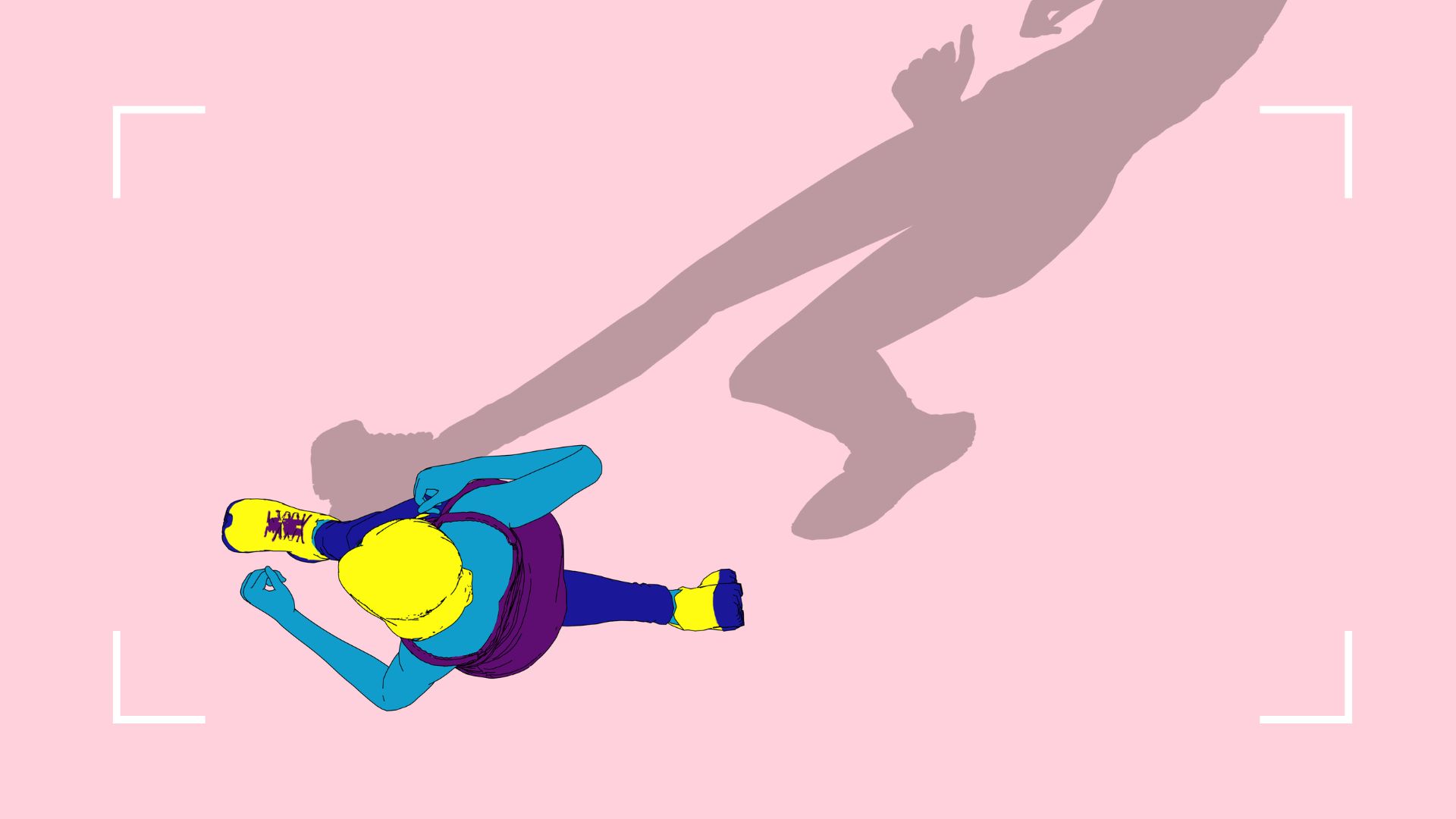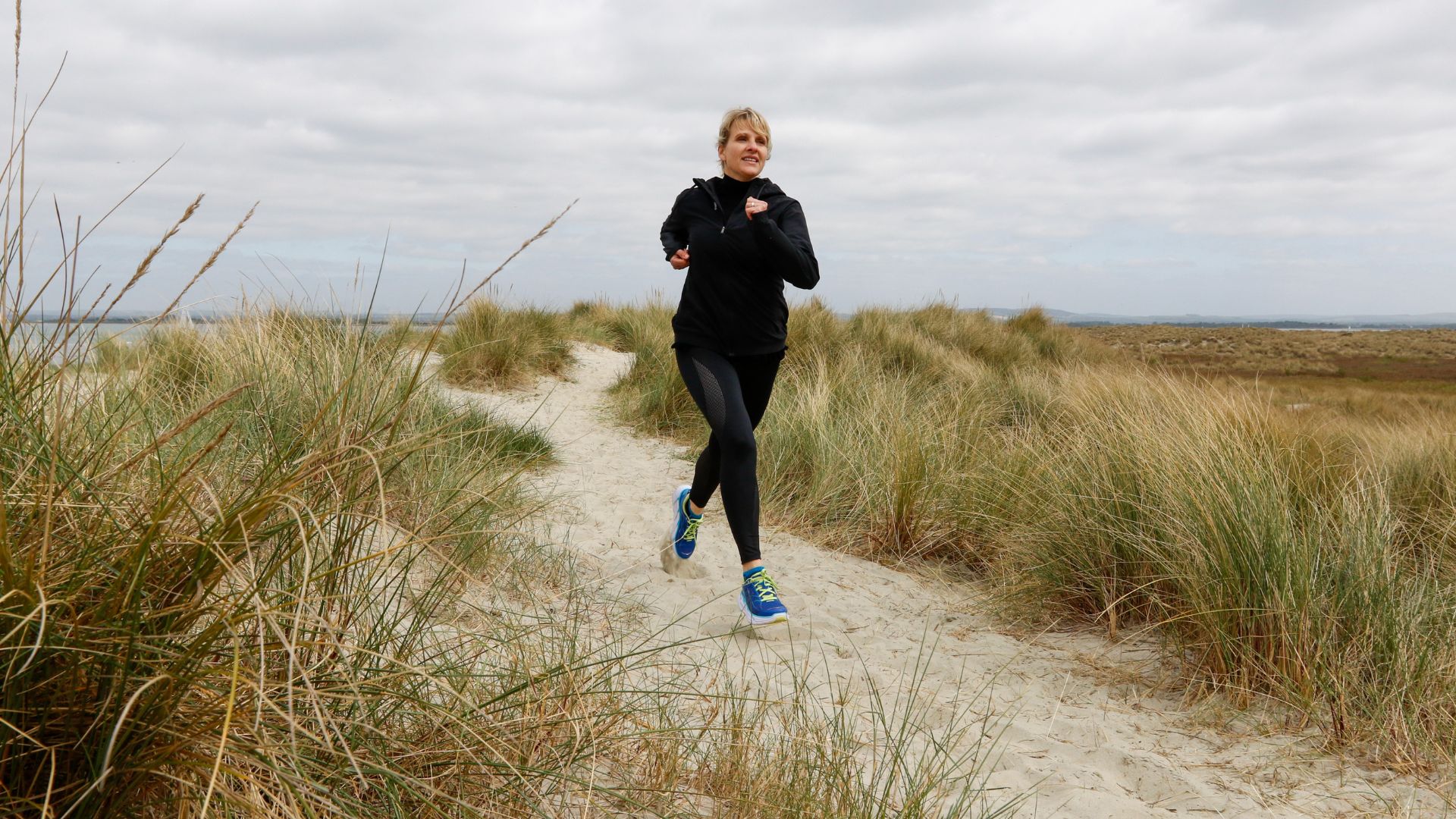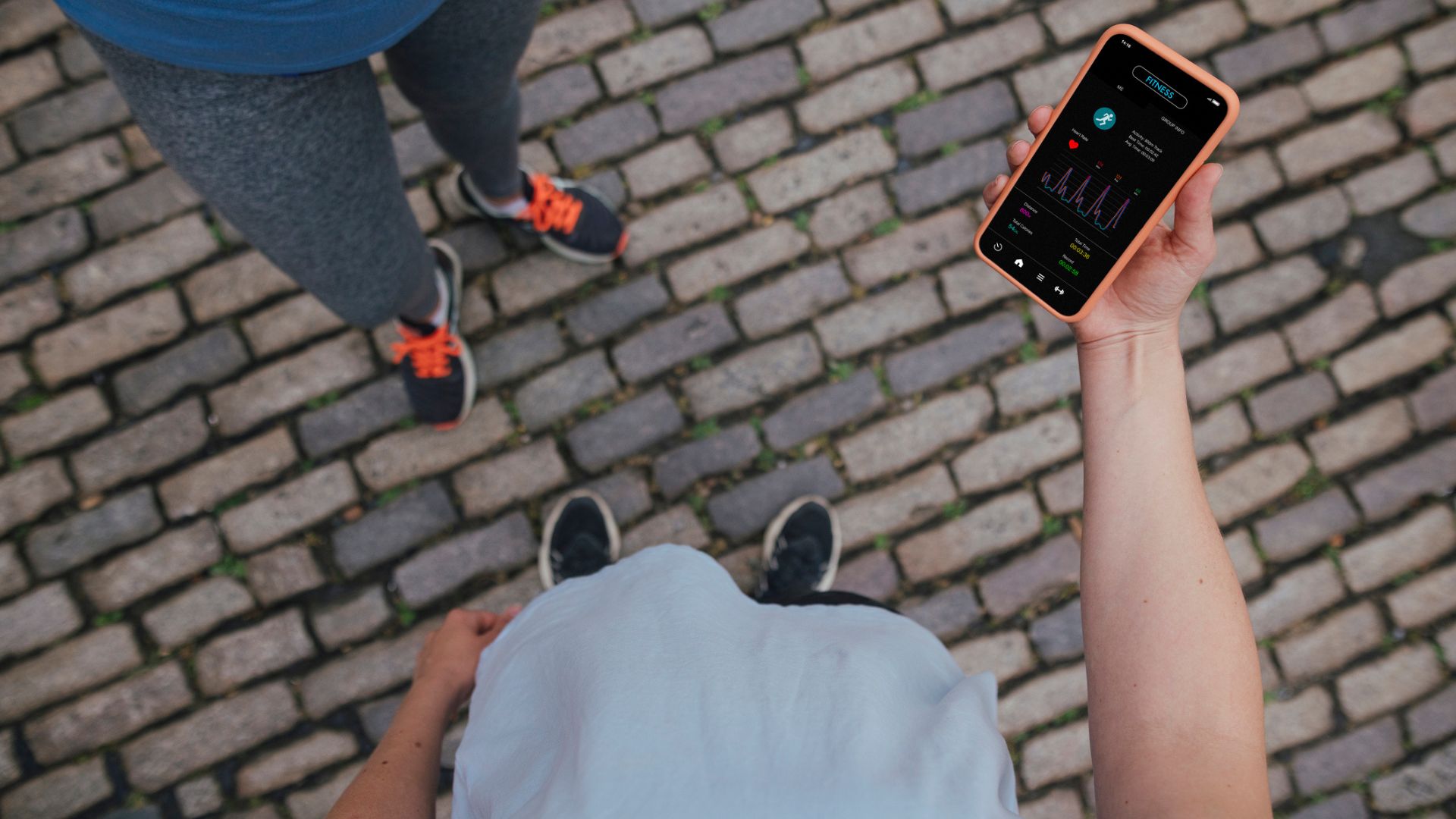I started running for the first time at age 50 - here's how it went
Writer Samantha Priestley had never done exercise before she started running as a beginner while going through menopause at age 50


Want to know how to start running as a beginner? It's easy enough, in many people's eyes, just move one foot in front of the other. But as anyone who's started the sport from scratch will tell you, it's a little more complicated than that. Here, writer Samantha Priestley reveals what it took for her to start running at age 50, the tips she'd offer to others looking to do the same, and the common mistakes to avoid.
We all know someone, probably more than one person, who’s passionate about running. We see them running down the street, hopping over hills, and down country lanes, striding with confidence. But at the age of 50, I hadn’t run a single step since school.
I was never a sporty kid and I struggled to motivate myself to exercise throughout adult life. But when I turned 50 I knew I had to make some changes. Menopause symptoms hit and I suddenly started to experience achy and painful knees and ankles. I was getting neck and back pain from not moving enough and with osteoporosis running in my family, I realised I couldn’t go on like this.
It was my partner who first suggested we try using a running app together. He knew I didn’t see myself as someone who exercised and I struggled with motivation, so by doing it together I was more likely to stick to it. 10 months later and I'm proud of making it this far. I've just started running 30 minutes a day and as someone who had never exercised previously, becoming someone who runs is a real turnaround for me.
How to start running as a beginner
1. Invest in a good pair of running shoes
Before I even walked out the door, I bought the best running shoes I could find. As I was 50 and struggling with achy ankles, I knew it was important for me to have good support. To find the ones for me, I spent some time researching the different types online, reading reviews, and then I bought a pair that seemed like the best fit for what I needed.
As Mike Hamlin, an NSCA, CSCS personal trainer, says, the right running shoe can make all the difference to your experience. "They can help prevent injuries and make your experience more comfortable," he explains. "We also need good ankle support as we age and poor-fitting shoes can increase the risk of injury in this area."
It's also something that Kate Dunbar recommended to us as she revealed how running changed her life for the better.
Sign up for the woman&home newsletter
Sign up to our free daily email for the latest royal and entertainment news, interesting opinion, expert advice on styling and beauty trends, and no-nonsense guides to the health and wellness questions you want answered.
2. Cross train with other forms of exercise
I was a few weeks into my running regime before I began introducing other forms of exercise. But once I did, I saw a huge change in my fitness. I already loved yoga, but I also started weightlifting around the same time and, after about six months, I really felt the benefits both on my runs and in my regular life.
Of course, this might have a lot to do with my age and the fact that I'd never done any strength training before but I saw my progress really quickly, particularly when it came to working with kettlebells. I found that these used more of my muscles than probably any other exercise over these weeks and although I couldn't lift them very high to begin with, I can now snatch and lift over my head.
The most change I noticed here was to my fitness levels - my runs felt faster and I was more confident on the move - but as Hamlin, who is also the founder of Everflex Fitness, explains, there are other important benefits to cross-training. "Incorporating different types of movement gives your body a better chance of being injury free," he says, pointing out one of the most common gym mistakes, since movements that put pressure on the muscles and bones help to strengthen them and the surrounding connective tissues.

3. Don't forget to warm up and cool down
Because I wasn’t used to exercising, the warming up and cooling down part of the process was vital for me - and quite surprising. I was familiar with the idea of stretching after exercising, but I didn’t realize how my muscles would seize up and cramp if I didn’t take this seriously and do it properly. Sure, I still got achy muscles a lot when I was learning how to start running as a beginner but stretching for a good 5 minutes post-workout really helped.
I found the warming-up process the easiest part of the drill, especially if I'd already been moving around earlier in the day.
“If you head out for a run after walking the dog or playing with the kids, that will mean your muscles are warm and your joints lubricated," explains Mollie Millington, an AFAA personal trainer. "Another option is to start your run more slowly for the first 5 minutes, then settle into your normal pace. A few minutes of stretching when you’re done will help avoid muscle soreness and leave you feeling great the next day.”
4. Get a running buddy
I can’t overstate how much having someone to run with helped me in those early days. I was lucky, my partner wanted to go through the process of learning how to start running with me, so we could encourage each other. Without someone else there, I’m sure I would have skipped days and found it much easier to slack off.
This is something Millington, who is also the owner of PT Mollie, tends to recommend to her clients where possible too. "Try to find someone to hold you accountable, such as a running buddy,” she says. “If you say you are going to meet someone for a run, it is harder to back out at the last minute.”
Alternatively, if you don’t know anyone who wants to run with you, join a running club. Clubs are so motivating and you can make friends along the way. A running club will also get you out into parts of your surrounding area you might not go on your own and you'll have the safety of numbers if you want to run outside of daylight hours.
5. Download an app
As one of the best running apps for beginners, I found the NHS Couch to 5k program really useful. It starts off gently, increasing your distances each week to work up to a 5km distance. I was used to walking 30 minutes a day, but looking down the weeks and seeing that my goal was to run for 30 minutes could have been daunting if I didn’t take it one small step at a time.
Naturally, there were times when I thought I wouldn't be able to make the next transition but I always did, and these small achievements helped spur me on and gave me a lot of confidence to keep moving.

How long should you run for as a beginner?
When I first started running as a beginner, I actually began with walking interspersed with a run for just 60 seconds at a time. Then I'd increase to 2 minutes, to 5 minutes, and to 10 minutes, until after a couple of months I could run for 30 minutes.
It's an approach that coach Hamlin recommends. “As a beginner, it's important to start slowly and gradually increase your running time,” he says, pointing out that one of the many common mistakes beginners make is trying to run every day.
“I recommend starting with 15 to 30 minutes, three times a week. You can increase the time by 5 to 10 minutes each week until you reach your desired distance or time. If that is a challenge, I recommend going for a walk and breaking into a light jog every now and then."
For me, it was important not to focus on the distance I was running, or how long I was running for at all. It was more about building up my endurance slowly with some slower runs and some faster sessions (also known as 80/20 running) and showing up to put the effort in. This is where it all paid off in the end as I felt a great sense of achievement at being able to do what I was doing, and although I did push myself, I was always conscious of not going too far with it.
Tips for running as a beginner
- Be patient: There were times when I felt frustrated with my slow progress when I was learning how to start running as a beginner, but I kept reminding myself that my fitness is a journey. Things I could have done easily in my 20s are more difficult now I’m over 40, especially considering my previous (lack of) exercise experience.
- Change up your environment: As much as I love running outdoors, I did try a few sessions doing Couch to 5km on a treadmill to vary up my running and prevent boredom.
- Tune into your body: This is a piece of advice I'd certainly give to anyone of a similar age to me. It’s so important to be aware of how you're feeling and what your body is telling you when you’re exercising. I had to pause my running regime when I experienced pain in one ankle after a run one day. It wasn’t anything to worry about but I knew I needed to rest to prevent any further injury.
- Switch up your routine: I run in my local park, on a sports field, and into the hills where I live. I've found that changing my route not only makes the runs more interesting and stops them from feeling monotonous, it’s also good brain work as I have to navigate different terrain and find my way around other areas.
- Listen to podcasts or music: Sometimes I just like running with the sounds of the countryside and I don’t like having earbuds in when I’m running on a busy street but if I’m feeling low on energy and I need that extra push, listening to music really helps me.
Samantha is a freelance writer from Yorkshire, writing about health and wellbeing for Woman & Home, Reader's Digest, Giddy, and Good Housekeeping. For the past 15 years, she's combined her personal experiences with reporting, to write about menopause, fitness, sleep, and healthy eating. She also writes about travel and food and drink for The Independent, The Good food Guide, Lonely Planet, Frommer's, and more.